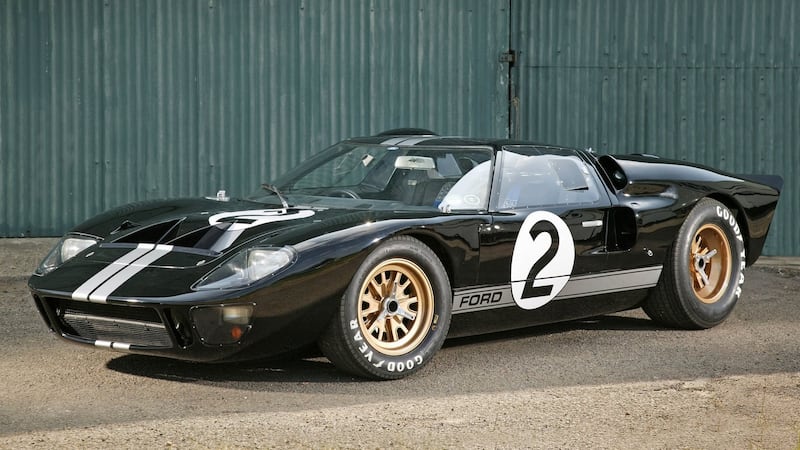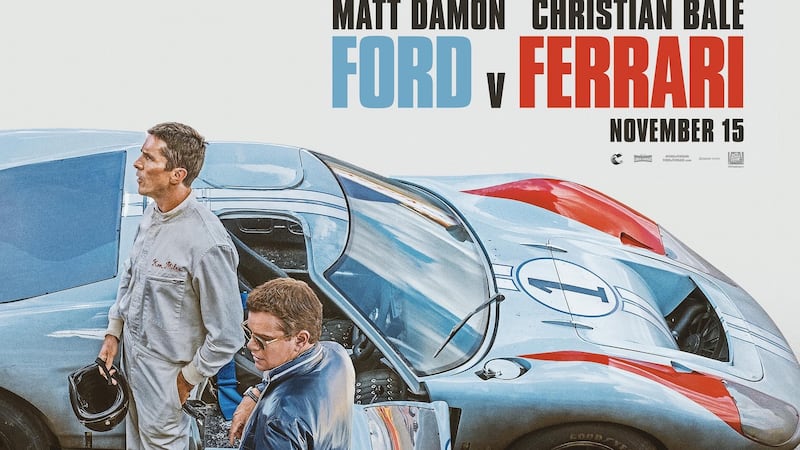"Alright. We'll beat his ass. We're going to race him." A startled underling looked at Henry Ford II. "How much money do you want to spend?"
"I didn't say anything about money," growled the grandson of Henry Ford. Thus were the vast financial and technological resources of the Ford empire directed at one, bright, red, target – Ferrari. Ironically, it would take the efforts of a bunch of low-paid car-nut racers, working from a garage looking out at the bobbing boats of Marina Del Ray in Los Angeles to do the job. More ironically still, it wasn't originally anything to do with Ferrari – it was all about beating Chevrolet.
Ford created the GT40, now one of the most famous of all racing cars
Opening in cinemas this week is a blockbuster racing film, Le Mans '66 (more accurately called Ford v Ferrari in the US market). It stars Matt Damon, Christian Bale, and more glorious 1960s racing metal than you can shake a winners' trophy at. Directed by James Mangold (the man behind the moody and brilliant Logan) it seeks to tell the true tale of how Ford took on the world's most storied racing team, at the world's greatest race. And won.
To do so it has rebuilt classic GT40 race cars and recreated the original 1960s Le Mans pitlane, on a California film set. Derek Hill, son of 1961 F1 world champ and multiple Ferrari Le Mans winner Phil Hill, is both stunt driver and bit-part player. It has, just possibly, done a better job of telling the true tale of what happened in those epic racing years than any other silver-screen exercise. But it can't hope to compete with what really happened.
What really happened is that, in 1962 Texan racing driver and wannabe constructor Carroll Shelby marched into the office of Lee Iaccoca, boss of Ford’s car-making division, and told him that for $25,000, he could make a car that would beat the Chevrolet Corvette.

He did it, too. It was called the Cobra and it married Ford’s light and powerful 4.7-litre V8 engine to a light and agile chassis bought from AC cars in the UK. It beat Corvette again and again, and in 1964 it even – in much modified Daytona Coupe form, with a new, streamlined body – beat Ferrari at Le Mans, in the GT category.
That wasn't enough for Henry Ford II, though. He wanted an outright win at Le Mans. He wanted to crush the all-conquering red Ferraris, and take revenge on Enzo Ferrari, who had very publicly snubbed a takeover bid by Ford itself. If Ford couldn't have Ferrari, then Ford – company and man – would destroy Ferrari, on the track at any rate.
To do so, Ford created the GT40, now one of the most famous of all racing cars. Based on original designs by Lola's Eric Broadley, the GT40 had a torturous birth with crashes, driver injuries and mechanical failures. On the eve of the 1966 running of the Le Mans 24 hours, Henry Ford II, still smarting from disastrous Ford outings in 1964 and 1965, sent a simple card to all his racing employees. It said: "You'd Better Win."
Ford and Shelby had a secret weapon though. Shelby, a driver and a putative businessman, not an engineer, had a knack of putting the right people together to work on his cars, and alongside the great Phil Remington (no-one was better at building racecar bodies than Remington) he brought in English racing driver, Ken Miles, as senior development driver.
Miles – taciturn, often grumpy, but a driver with a rare feel for how to take a random assemblage of bolts and tyres and turn it into a racing car – had taken the mess that was the original, wayward, Shelby Daytona Coupe and through endless hard work and incredibly fast driving, brought it home a winner. Now he had to work the same magic on Ford's GT40, a car that had been designed very much by a committee. Ford's huge technical armoury may have had the resources, but its company executives didn't know squat about making a workable racing car.
When the grid lined up for the start of the 1966 race, the GT40 may have looked roughly similar, but Shelby’s team had dramatically changed its aerodynamic package, and crucially added more scoops and holes in the bodywork to keep everything cool. They’d also kept the massive 7.0-litre Ford V8 engine as used (so disastrously) in 1965, and its hard-edged rumble sounded out a sharp contrast to Ferrari’s screaming, wailing V12s.
This time, Ford was not to be denied. As the Ferraris wilted under the relentless pressure, Miles, co-driving with Indycar racer Lloyd Ruby, set a ferocious pace. He should have won by, well, miles.
That he didn't was because of a final piece of hubris for Ford. Henry II decided that the three GT40s that finished 1-2-3 in the race should cross the finishing line in a dead heat, side by side. Orchestrating this was easier decreed than done, and at the end it was the black and silver number two GT40, driven by Bruce McLaren and Chris Amon, that finished just yards ahead of the number one Miles/Ruby car.
Miles was disconsolate, and harboured unhappy thoughts that McLaren had given his GT40 an extra burst of throttle to take the win. He wouldn’t have long to brood, though. Just two months after Le Mans, Miles was dead – a crash while testing Ford’s composite-body “J-Car” at the Riverside race track in California took him right at the peak of his career.
Ferrari, meanwhile, would withdraw from the top-tier class at Le Mans and has still not returned.
However good Le Mans ’66 is at putting all of that on screen, it simply cannot compete with the ear-splitting, tyre-smoking, death-dicing, real thing.

Le Mans '66 is in cinemas from November 15th. Want more? Get a copy of the brilliant book Go Like Hell, by AJ Baime, which we thoroughly raided for the background to this feature.












